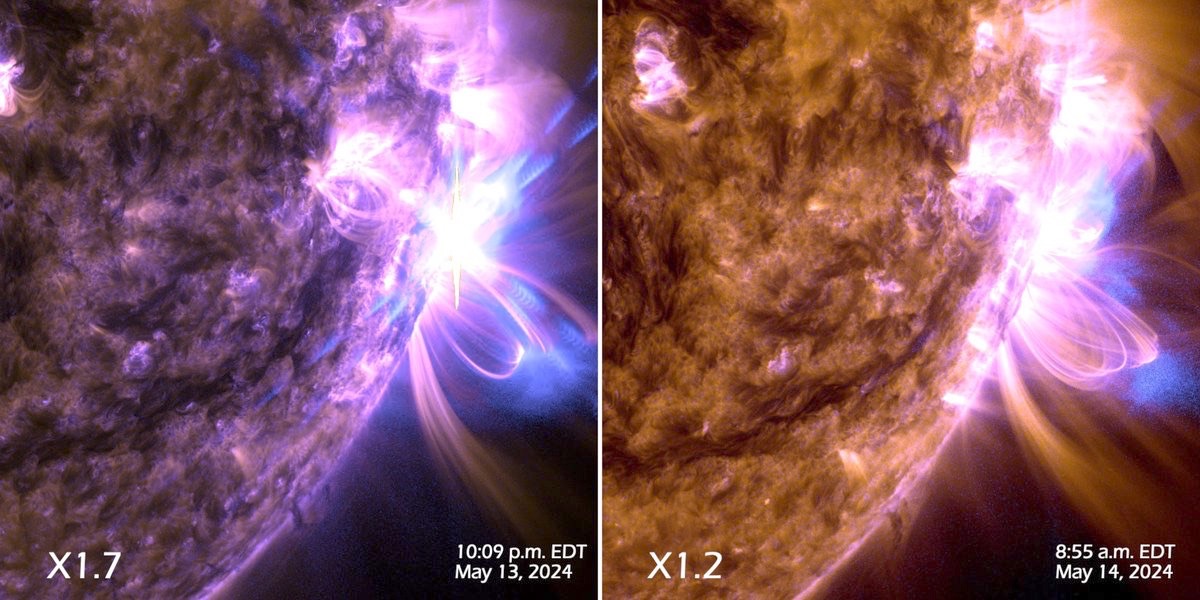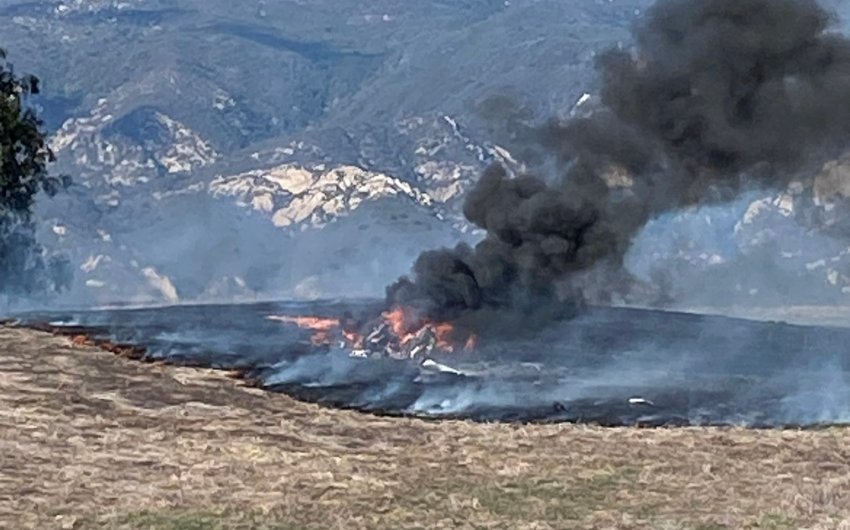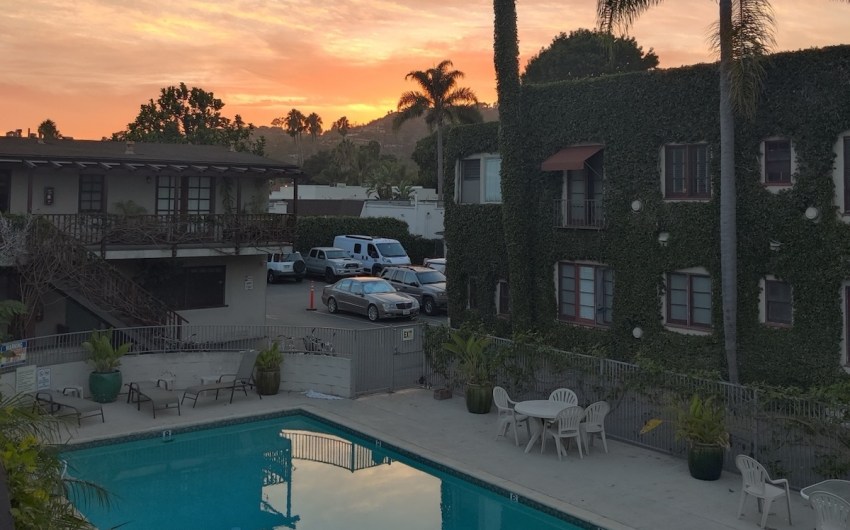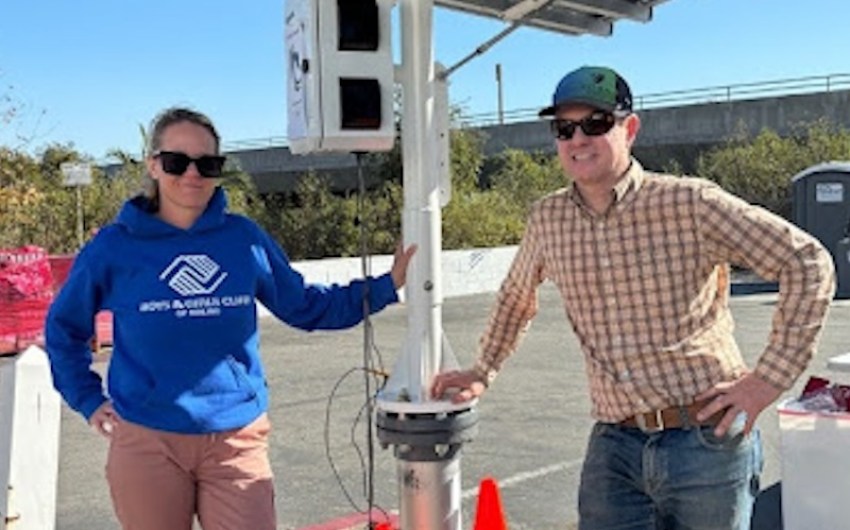Solar Storm Continues Following Rare Aurora Display over Weekend
Santa Barbara Airport, Cox, and SoCal Edison Report Operations Have Not Been Affected by Solar Flares

The shimmering lights of the aurora borealis glow in the skies around the Arctic Circle, but this past weekend, an extraordinary set of sunspots blew the Northern Lights southward, even as far as Santa Barbara County. Tom Rejzek was there with his DSLR to capture it.
“Reports were showing visible aurora in the states north of us,” Rejzek said. “Unfortunately, it was foggy in Santa Maria,” where he lives, “so I headed inland on Foxen Canyon, and the fog finally broke just south of Alisos Canyon Road” on Friday night. Rejzek said he could see very faint vertical white lines on the horizon, but by using 30-second exposures: “Success!”
What Rejzek’s camera captured were molecules of oxygen and nitrogen in the outer atmosphere “excited” by the solar storm arriving to Earth and smashing into the magnetosphere. As the electrons are energized down Earth’s magnetic field lines, the distinctive “dancing” lights emerge, usually one to three days after a big coronal mass ejection travels the 93 million miles to the third planet from the Sun.

The giant ball of gas that is our Sun has continued to fling strong flares, the largest on Tuesday morning, California time, according to the Space Weather Prediction Center. Meanwhile, the star has been rotating left to right, moving the sunspot away from Earth. It might still be flaring when the area returns in a couple of weeks, said Dana Longcope, a physicist at Montana State University who is familiar to those who have attended presentations at the Kavli Institute for Theoretical Physics at UCSB. By then, it will be weaker and less likely to produce such dramatic flares and mass ejections, Longcope predicted.
A giant solar flare in 1859 was the first one recorded, named the Carrington Event after the British astronomer who observed the very bright light on the Sun’s surface. That one reputedly set telegraph offices on fire and more ascertainably charged the telegraph wires so that power wasn’t needed to send messages.
Though the x-rays generated by the solar flares can affect satellite transmissions from the upper layers of Earth’s atmosphere, Santa Barbara Airport spokesperson Angi Daus said no operational or communications issues had occurred. Likewise, Cox and SoCal Edison spokespeople said their operations had not been affected by the solar storm. The interest in this solar event has been so strong, however, the website for the Space Weather Prediction Center has crashed twice since Friday.
[Update: May 15, 2024] On Wednesday, a new X-flare emerged from the left edge of the Sun: “A new player has entered the game!” tweeted Ryan French of the National Observatory in Colorado.



![Lompoc Opts Out of Wine Country [Corrected]](https://www.independent.com/wp-content/uploads/2025/01/Lompoc_Scenic_Hills_Vineyards_JeremyBall.jpg?resize=850%2C530)





You must be logged in to post a comment.